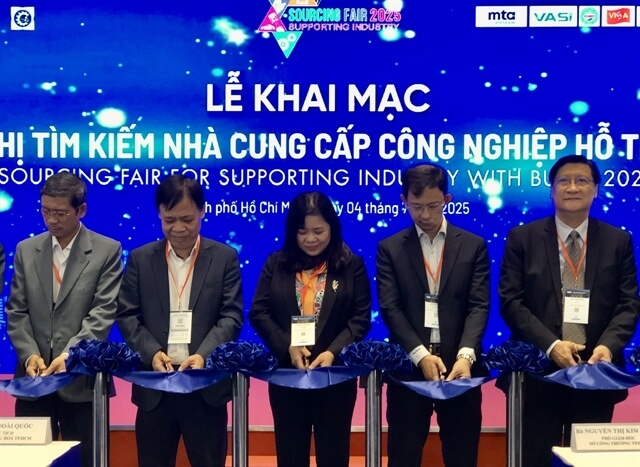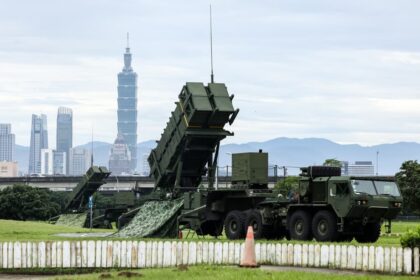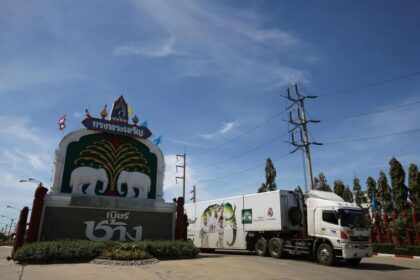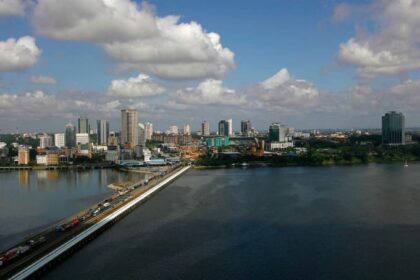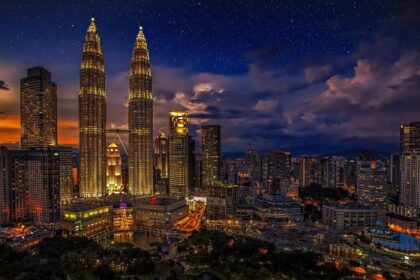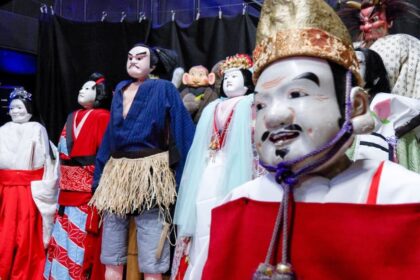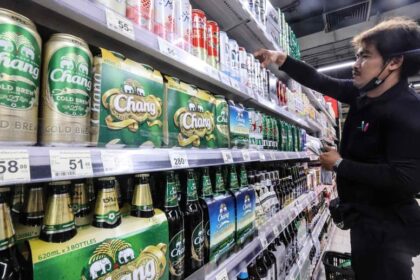Vietnam’s Sourcing Fairs: A New Era for Global Supply Chain Integration
Ho Chi Minh City (HCM City) is rapidly emerging as a pivotal hub for global supply chain integration, as evidenced by the scale and ambition of its 2025 sourcing fairs. These events, including the Sourcing Fair of Supporting Industry with Buyers (SFS 2025) and the Global Sourcing Fair Vietnam 2025, are designed to connect Vietnamese suppliers with international buyers, foster innovation, and position Vietnam as a leading sourcing destination in Asia. The fairs are not only exhibitions but also strategic platforms for business networking, knowledge exchange, and direct market access, reflecting Vietnam’s growing role in the global manufacturing and export landscape.
- Vietnam’s Sourcing Fairs: A New Era for Global Supply Chain Integration
- What Makes HCM City’s Sourcing Fairs Stand Out?
- Vietnam’s Strategic Advantages in the Global Sourcing Landscape
- Connecting Vietnamese Suppliers to the World: Business Matching and Networking
- Showcasing Innovation: Product Zones and Industry Seminars
- Government Support and Policy Initiatives
- International Participation and Expanding Market Reach
- Challenges and Opportunities for Vietnamese Suppliers
- Broader Implications: Vietnam’s Role in the Global Supply Chain
- In Summary
What Makes HCM City’s Sourcing Fairs Stand Out?
The 2025 Sourcing Fair of Supporting Industry with Buyers (SFS 2025), held at the Saigon Exhibition and Convention Centre (SECC), marks the eighth edition of a program that has steadily grown in scale and influence. This year, the event attracted 20 foreign companies and large-scale Vietnamese manufacturers from sectors such as electronics, home appliances, automotive, mechanical engineering, aerospace, and medical equipment. More than 300 pre-arranged hybrid networking sessions were organized between these firms and representatives from 100 Vietnamese supporting industry manufacturers, highlighting the fair’s focus on practical, results-driven business connections.
In parallel, the Global Sourcing Fair Vietnam 2025, also at SECC, brings together over 400 exhibitors with 500 booths, representing countries and territories including India, Hong Kong, Bangladesh, the Philippines, South Korea, the Netherlands, and Vietnam. With approximately 30,000 export-standard products on display, the fair covers key sectors such as fashion and accessories, home decor and gifts, and consumer electronics. The event is expected to welcome over 10,000 buyers, sourcing agents, and retailers from major markets like the US, Canada, Germany, France, Spain, the UK, the Middle East, the UAE, China, Japan, and South Korea.
These fairs are more than just trade shows—they are comprehensive business ecosystems, offering workshops, seminars, fashion shows, and business matching programs that facilitate direct connections between buyers and suppliers. The events are co-organized by the HCM City Department of Industry and Trade, the Saigon Hi-Tech Park Management Board, and the HCM City Export Processing and Industrial Zones Authority, ensuring strong institutional support and alignment with national industrial policy.
Vietnam’s Strategic Advantages in the Global Sourcing Landscape
Vietnam’s rise as a sourcing destination is underpinned by several strategic advantages. The country offers a stable political environment, competitive production costs, a skilled workforce, and a business-friendly regulatory framework. These factors have made Vietnam increasingly attractive to international companies seeking to diversify their supply chains amid global uncertainties, such as shifting trade policies, rising tariffs, and geopolitical tensions.
One of Vietnam’s key strengths is its ability to offer diverse products in small order quantities, catering to the needs of small and medium enterprises (SMEs) and reducing inventory risks for buyers. Suppliers participating in the fairs undergo rigorous vetting to ensure compliance with international certifications such as ISO, CE, GOTS, and OEKO-TEX, meeting the requirements of demanding markets in the US, EU, Australia, and the Middle East.
Sam Hui, Vice President of Global Sources, emphasizes the fair’s role as a strategic springboard for enterprises:
“As companies face unprecedented challenges and strive to diversify their supply chains, this event becomes the critical platform where global buyers and top-tier manufacturers from Vietnam and Asia come together to forge transformative partnerships. It is an unparalleled opportunity to secure the future of international trade, drive innovation, and unlock new avenues for growth.”
Vietnam’s open business environment and strategic location in Southeast Asia further enhance its appeal, providing easy access to regional and global markets.
Connecting Vietnamese Suppliers to the World: Business Matching and Networking
At the heart of the sourcing fairs is a robust business matching program. Over the years, the SFS initiative has connected more than 136 foreign-invested enterprises and end-product manufacturers with 470 small- and medium-sized Vietnamese supporting industry enterprises, resulting in over 2,100 face-to-face networking sessions. The 2025 edition continues this tradition, with more than 300 pre-arranged hybrid meetings and an estimated 3,000 direct networking sessions across all events.
These sessions are not just about exchanging business cards—they are structured opportunities for Vietnamese suppliers to showcase their capabilities, understand the requirements of international buyers, and negotiate contracts. Major global retailers and purchasing groups, including Walmart Sourcing, Sam’s Club, Li & Fung, Adidas, ACFC, Maison Corporation, and Kingfisher, have registered to participate, underscoring the fairs’ international reach and commercial significance.
Nguyen Thi Kim Ngoc, deputy director of the HCM City Department of Industry and Trade, highlights the event’s mission:
“The event seeks to foster practical linkages between domestic supporting industry businesses and foreign direct investment enterprises or major manufacturing corporations in Vietnam.”
This approach is designed to help HCM City’s supporting industries proactively and deeply integrate into global supply chains, especially as international production landscapes continue to shift.
Showcasing Innovation: Product Zones and Industry Seminars
The 2025 fairs are notable for their diverse and innovative product offerings. The Electronics & Home Appliances Zone, for example, features cutting-edge consumer electronics, smart home devices, automotive electronics, and mobile accessories. The Vietnam Pavilion highlights home goods, furniture, fashion, textiles, and handicrafts, while the Korea and India Pavilions showcase signature products from their respective countries, such as K-Beauty items, wellness products, and handwoven textiles.
Beyond product displays, the fairs offer a rich program of industry seminars and workshops. Topics include “Sourcing in Vietnam: Real Lessons from Successes and Failures,” “Vietnam’s Logistics Landscape: Context and Challenges,” and “Sustainability in Global Sourcing: The Path to Net Zero.” These sessions are led by industry experts in manufacturing, logistics, and legal affairs, providing participants with strategic insights into market trends, consumer preferences, and updated trade regulations in key export markets.
Fashion parades, featuring over five shows across three days, allow buyers to witness the latest collections from leading suppliers, spanning styles from creative and eco-friendly to formal and casualwear. These activities not only enhance the buyer experience but also help Vietnamese suppliers understand and adapt to international market demands.
Government Support and Policy Initiatives
The success of HCM City’s sourcing fairs is closely linked to strong government support and targeted policy initiatives. The city has issued Resolution 09, offering interest rate subsidies for loans to priority sectors, including mechanics, electronics-information technology, pharmaceuticals-rubber-plastics, food processing, and supporting industries. This policy encourages businesses to invest in production upgrades and expand their scale to meet market demands.
Le Nguyen Duy Oanh, deputy director of the city’s Centre for Supporting Industries Development, explains the city’s approach:
“The key is that firms need to join hands to enhance their competitive advantages in the global supply chain. Forming chains or clusters of components allows them to meet the stringent requirements of emerging technology markets and enhance their competitiveness in global supply chains.”
To this end, the city organizes regular networking events, specialized exhibitions, and training programs focused on modern manufacturing methodologies such as 5S, Kaizen, and Lean. These initiatives help local manufacturers acquire technology and management experience, modernize their production, and gradually integrate into global supply chains.
International Participation and Expanding Market Reach
The 2025 Vietnam International Sourcing event, scheduled for September, is expected to attract more than 300 international purchasing delegations from 60 countries and territories, supported by over 60 Vietnamese trade offices worldwide. International buyers will explore over 12,000 products across four key sectors at 500 booths run by more than 400 Vietnamese businesses. The products range from farm produce and processed foods to garments, textiles, footwear, furniture, supporting industry goods, and personal electronic devices.
Major international brands, including H&M and other Nordic companies, are sending delegations to seek business partnerships, reflecting a strong shift in global sourcing strategies toward Vietnam. The participation of such brands opens up significant opportunities for Vietnamese businesses, particularly in fashion, textiles, and sustainable supply chains. The event also features sideline activities such as seminars, B2B trade connections, survey programs, and factory and industrial park tours, focusing on export standards, green transition, logistics, and international branding.
Challenges and Opportunities for Vietnamese Suppliers
While the fairs offer unprecedented opportunities, Vietnamese supporting industry firms still face challenges. Many struggle with limited domestic market acceptance and tough competition from foreign counterparts. To secure a foothold in global supply chains, businesses must invest in quality improvements, upgrade factories and management systems, and adopt international standards.
Recent trends show that buyers increasingly request a full range of components rather than individual parts, raising the bar for local suppliers. Only a handful of Vietnamese businesses can currently meet these demands, underscoring the need for continued technical skill development, investment in production capacity, and human resource training.
However, success stories abound. Companies like Vinavit Corp have positioned themselves as global suppliers by investing in quality improvements and expanding their production capabilities. Such examples demonstrate that with the right strategy and investment, Vietnamese firms can compete on the global stage.
Broader Implications: Vietnam’s Role in the Global Supply Chain
The significance of HCM City’s sourcing fairs extends beyond immediate business deals. They are part of a broader national strategy to integrate Vietnamese businesses into global supply chains by 2030. By hosting international events, facilitating B2B meetings, and providing training and policy support, Vietnam is positioning itself as a reliable, innovative, and competitive sourcing destination.
As global companies seek to diversify their supply chains and reduce dependence on single markets, Vietnam’s combination of cost-effectiveness, quality, and flexibility makes it an increasingly attractive partner. The country’s focus on sustainability, digital transformation, and advanced manufacturing further enhances its long-term prospects in the global economy.
In Summary
- HCM City’s 2025 sourcing fairs are major platforms connecting Vietnamese suppliers with global buyers, fostering integration into international supply chains.
- Vietnam’s strategic advantages include a stable political environment, competitive costs, skilled workforce, and compliance with international standards.
- The fairs feature extensive business matching, innovative product zones, and industry seminars, attracting over 10,000 buyers and 400+ exhibitors from around the world.
- Strong government support and targeted policies encourage investment in production upgrades and supply chain integration.
- International participation is growing, with major brands like H&M seeking partnerships in Vietnam.
- Vietnamese suppliers face challenges but also significant opportunities to upgrade, innovate, and compete globally.
- The events are part of a national strategy to position Vietnam as a leading sourcing destination and a key player in global supply chains by 2030.


